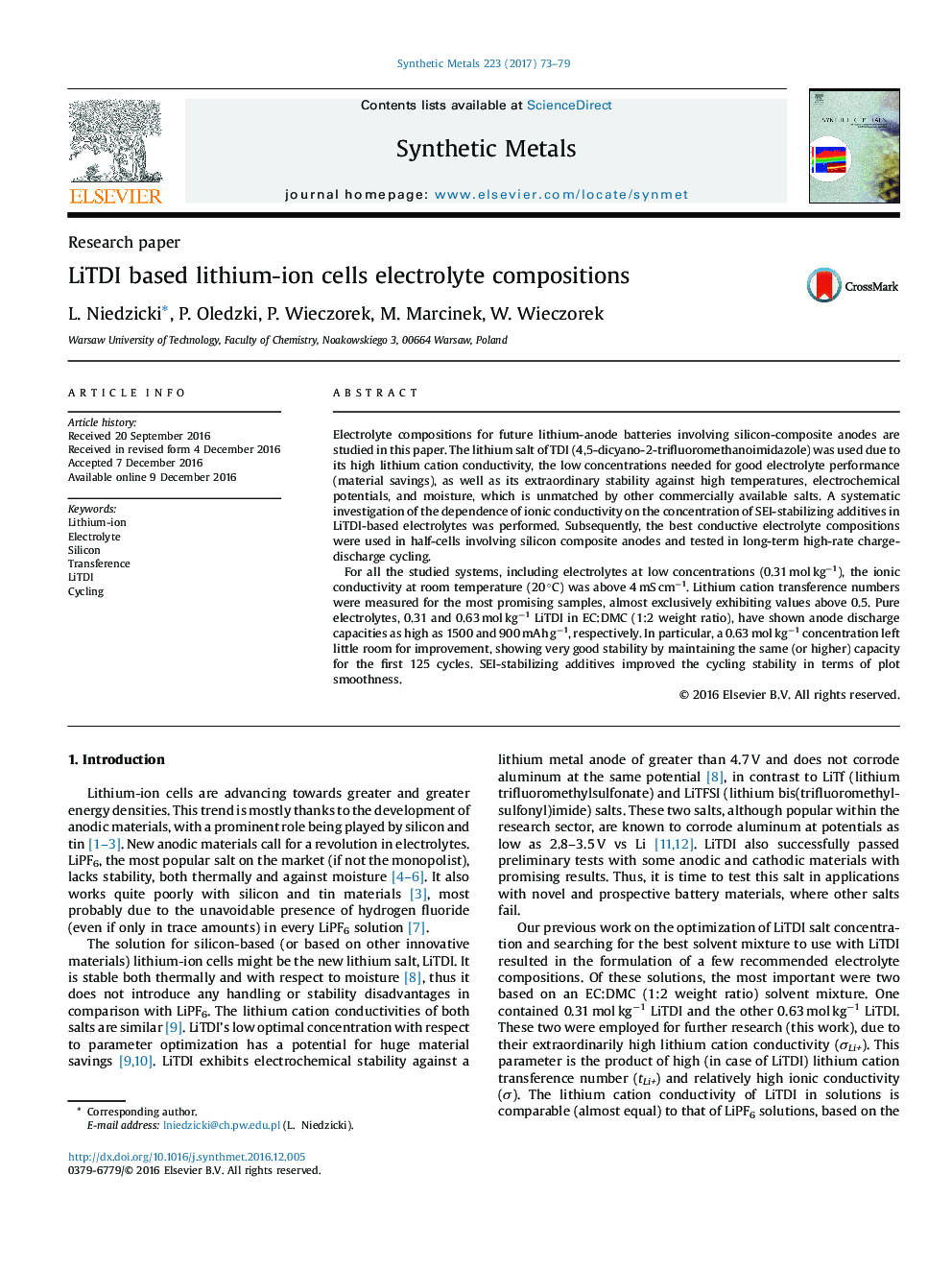| Article ID | Journal | Published Year | Pages | File Type |
|---|---|---|---|---|
| 5435654 | Synthetic Metals | 2017 | 7 Pages |
â¢LiTDI-based electrolyte compositions were studied for electrochemical performance.â¢Good parameters were obtained for low conc. (0.31/0.63 M) with VC and FEC additives.â¢High lithium cation conductivity (>0.5) and conductivity (>5 mS/cm) were observed.â¢>900 mAh/g discharge capacity in half-cells with Si/C composite anodes were measured.â¢No capacity fade after 500 cycles was observed in optimized composition.
Electrolyte compositions for future lithium-anode batteries involving silicon-composite anodes are studied in this paper. The lithium salt of TDI (4,5-dicyano-2-trifluoromethanoimidazole) was used due to its high lithium cation conductivity, the low concentrations needed for good electrolyte performance (material savings), as well as its extraordinary stability against high temperatures, electrochemical potentials, and moisture, which is unmatched by other commercially available salts. A systematic investigation of the dependence of ionic conductivity on the concentration of SEI-stabilizing additives in LiTDI-based electrolytes was performed. Subsequently, the best conductive electrolyte compositions were used in half-cells involving silicon composite anodes and tested in long-term high-rate charge-discharge cycling.For all the studied systems, including electrolytes at low concentrations (0.31 mol kgâ1), the ionic conductivity at room temperature (20 °C) was above 4 mS cmâ1. Lithium cation transference numbers were measured for the most promising samples, almost exclusively exhibiting values above 0.5. Pure electrolytes, 0.31 and 0.63 mol kgâ1 LiTDI in EC:DMC (1:2 weight ratio), have shown anode discharge capacities as high as 1500 and 900 mAh gâ1, respectively. In particular, a 0.63 mol kgâ1 concentration left little room for improvement, showing very good stability by maintaining the same (or higher) capacity for the first 125 cycles. SEI-stabilizing additives improved the cycling stability in terms of plot smoothness.
